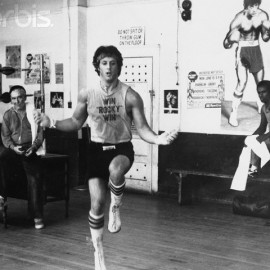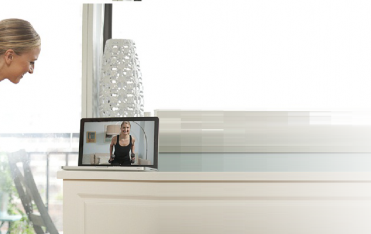Skipping or more trendily ‘jump-roping’ is an incredible form if exercise and more versatile than you might think – it shouldn’t just be relegated to warm up status – it’s a great workout in itself and even the the National Osteoporosis Society recommends daily skipping to help strengthen hips and legs!
Here’s why its such a winner..
Cardio-vascular challenge – traditionally, skipping falls under the category of cardiovascular exercise and it doesn’t take many hops before you feel your heart and breathing rate increase and you start to sweat.
Fat-burning – skipping burns fat at an extremely high rate – a 20 minute session can burn 300 calories, while some pros can burn a huge 1,300 calories per hour. It’s such a good fat burner that schools up and down the country are using it to help kids fight the flab.
Muscle-toning – including shorter, high-intensity interval sets demands more muscle activation and recruits more muscle fibres for both upper and lower body, this helps build muscle, which makes you more efficient at burning calories. And overall, it improves cardiovascular strength and muscle tone, particularly in the shoulders and lower body.
Athleticism – this is one of the main reasons skipping is so popular. Anyone that competes in a sport that involves coordination, footwork, rhythm, speed, and agility, and even power will benefit from training with a jump rope. Top athletes are using jump ropes because there are so many performance benefits.
Mind muscle coordination – being so dynamic and rhythmic and requiring correct placement of your feet in time and space – skipping is great for connecting mind and body. It relies on the body and mind being loose and relaxed and is excellent for focus and getting in ‘the zone’ – which is why boxers and so many other athletes use it to prepare.
Practical – after running, skipping has to be the most portable, anytime, anyplace exercise and can be enjoyed indoor or out, as long as you have a flat, even surface. And no gym memberships or subscriptions – makes it one the cheapest forms of exercise – a decent pair of trainers and a rope will set you back about £10. Packing a rope in your handbag or carry on luggage means you don’t have to abandon your training when travelling or working away.
Technique – the key to getting up a good speed is to keep the jumps as small as possible and to land on the balls of your feet so you can spring back up. You need to make quick, small circling motions at the wrists and be able to move the arms freely and quickly across the body for cross-over moves. Once you’ve mastered the basics, use a weighted rope for interval training and muscle building work. And then you can start mixing it up with other modes of exercise so reinforcing that integrated, functional training I always bang on about. Such as, skipping intervals weighted squats, and/or walking lunges – whatever it is to suit your needs and meet your goals.
So, when traditional exercise eludes or bores you grab your skipping rope, put on some tunes on jump. This simple rope is one of the most versatile yet effective tools in your quest to get leaner and fitter and possibly a little cockier!



